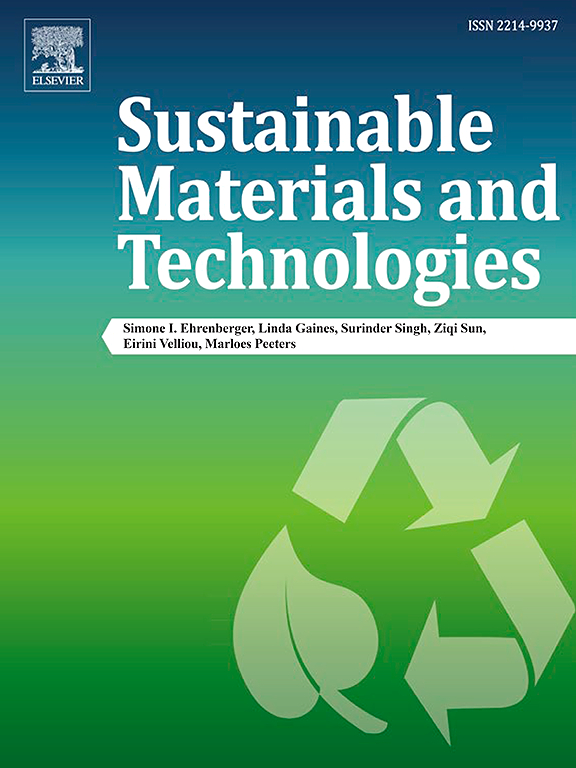Recycling shield soil dreg into green cementitious material for ultra-high performance concrete: Bridging waste management and sustainable construction
IF 8.6
2区 工程技术
Q1 ENERGY & FUELS
引用次数: 0
Abstract
The large-scale development of urban underground spaces has resulted in hundreds of millions of cubic meters of accumulated shield soil dreg waste, occupying huge amounts of land resources and potentially causing groundwater pollution and soil salinization. In this study, shield soil dreg waste is recycled and activated to substitute cement in ultra-high performance concrete, aiming to promote solid waste management and sustainable construction. The slump, mechanical performance, and autogenous shrinkage of the concrete are investigated through macro-scale tests, and the underlying mechanism is revealed via micro-scale experiments. The incorporation of calcined shield soil dreg reduces flowability and leads to a 10.2 % deterioration in compressive strength of the ultra-high performance concrete while mitigating autogenous shrinkage. The primary reason is due to the low CaO content of shield soil dreg, which limits the formation of calcium silicate hydrate, and its high SiO₂/Al₂O₃ content slows hydration kinetics. The environmental and economic benefits of the concrete are determined via life cycle analysis. Recycling shield soil dreg waste into concrete results in about 35 % reduction in carbon emission and 22 % reduction in energy consumption. According to multi-criteria assessment, the overall performance of the concrete considering economic cost, environmental benefit, as well as physical and mechanical properties increases compared to the pristine concrete, achieving well-balanced economic feasibility, environmental sustainability, and engineering performance. The findings of this study provide an effective approach for recycling shield soil dreg and preparing low-carbon concrete, thus promoting solid waste management and sustainable construction.
求助全文
约1分钟内获得全文
求助全文
来源期刊

Sustainable Materials and Technologies
Energy-Renewable Energy, Sustainability and the Environment
CiteScore
13.40
自引率
4.20%
发文量
158
审稿时长
45 days
期刊介绍:
Sustainable Materials and Technologies (SM&T), an international, cross-disciplinary, fully open access journal published by Elsevier, focuses on original full-length research articles and reviews. It covers applied or fundamental science of nano-, micro-, meso-, and macro-scale aspects of materials and technologies for sustainable development. SM&T gives special attention to contributions that bridge the knowledge gap between materials and system designs.
 求助内容:
求助内容: 应助结果提醒方式:
应助结果提醒方式:


